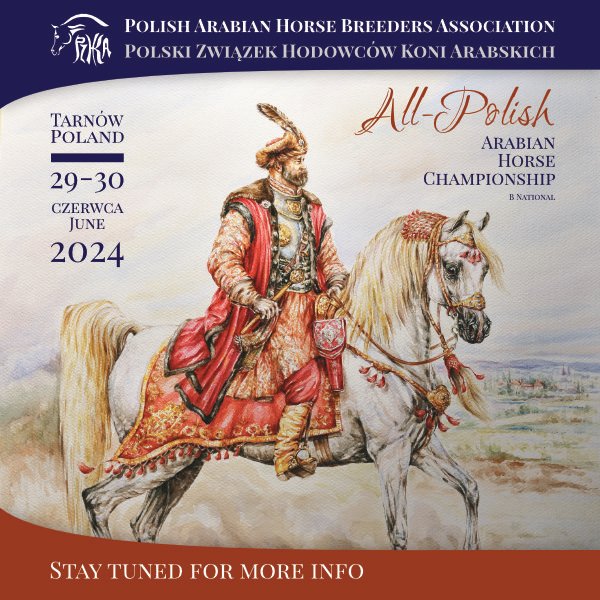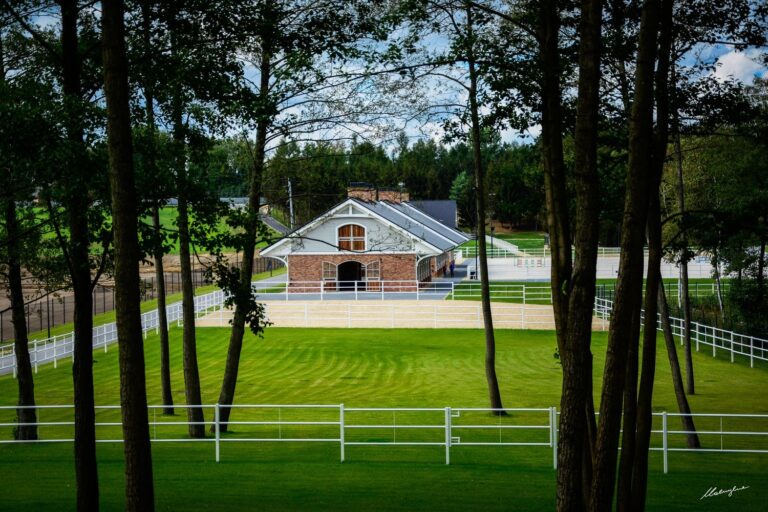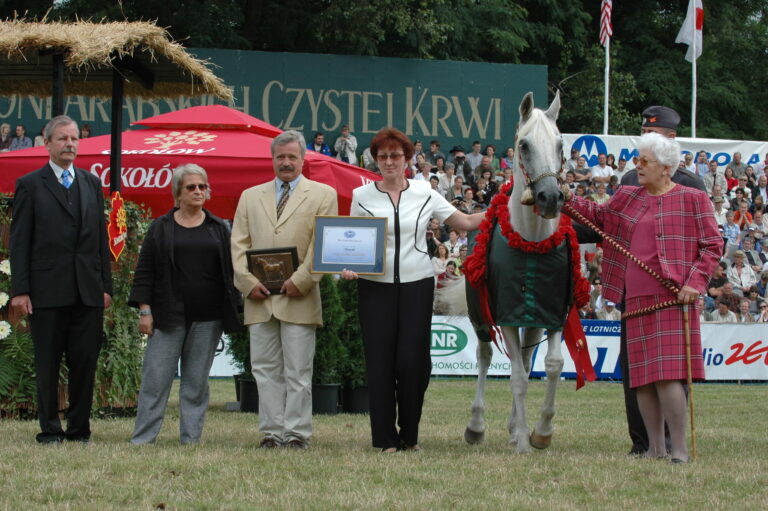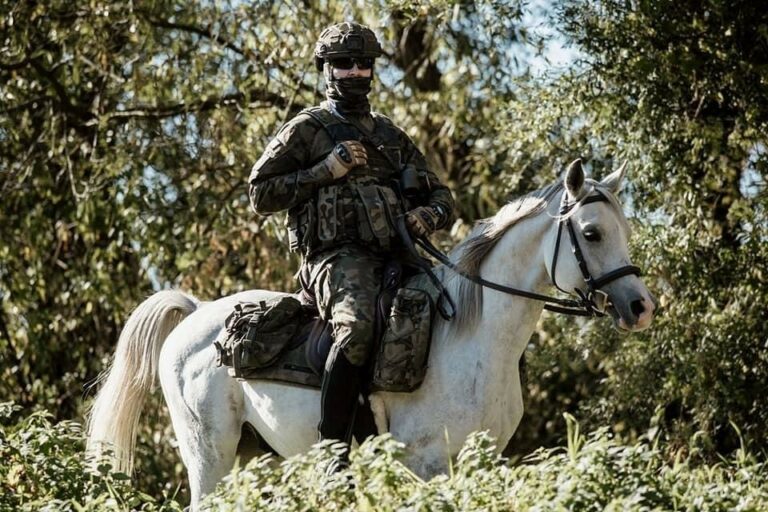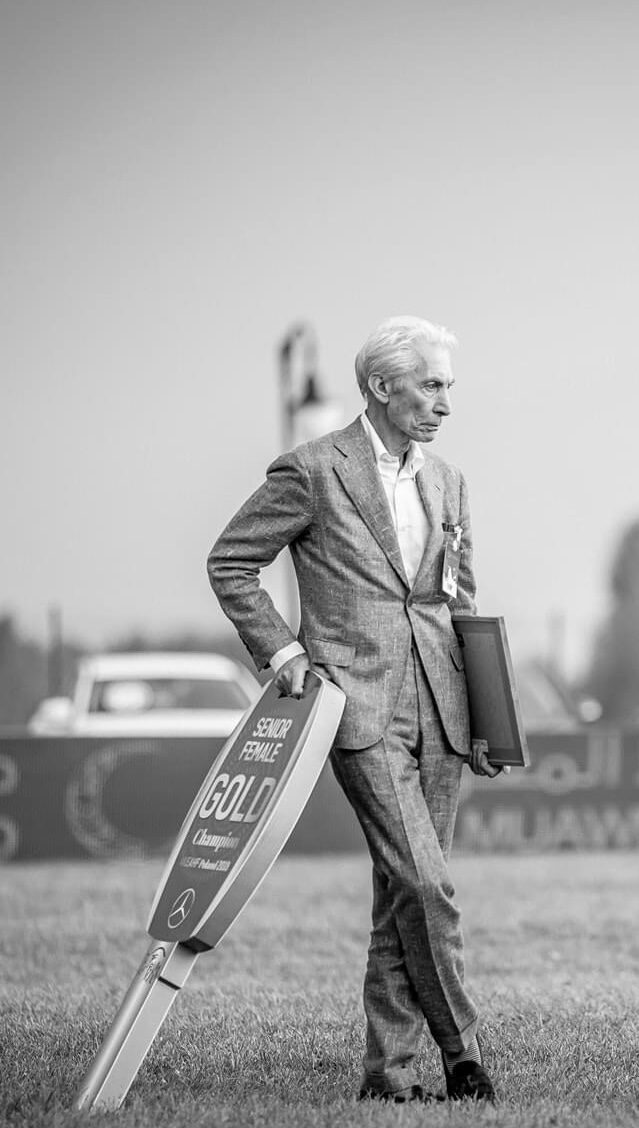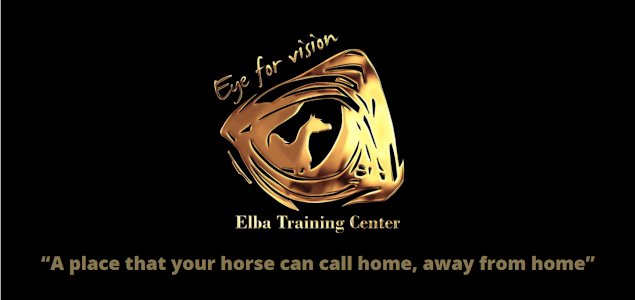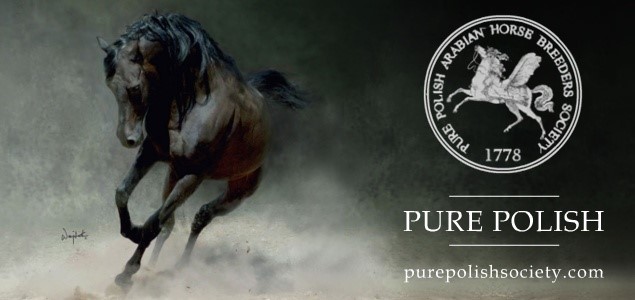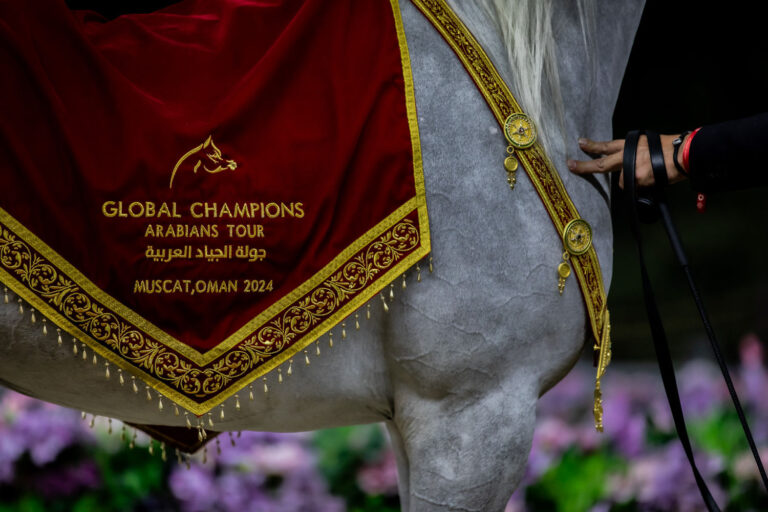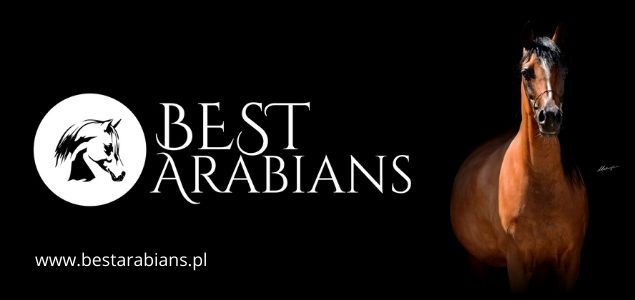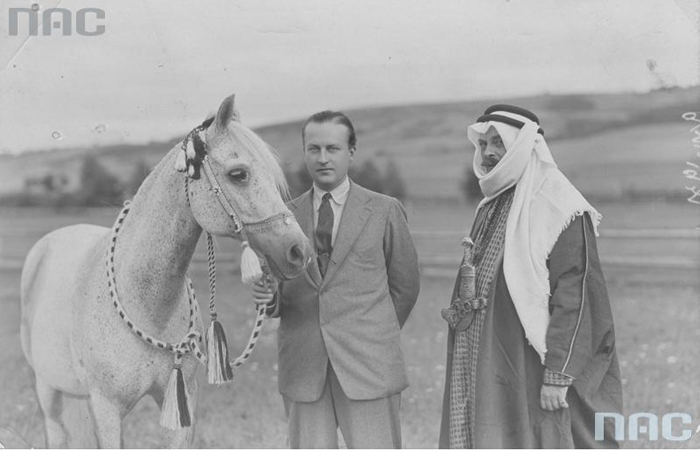
A sensational discovery: Unknown letters of BOGDAN ZIĘTARSKI and CARL RASWAN from their expedition to Arabia!
Polskiearaby.com have unearthed documents which cast a new light on the famous horse-buying expedition for the stud of Prince Roman Sanguszko in Gumniska near Tarnów. Several letters, discovered 80 years after being written, bring surprising details on one of the most extraordinary expeditions of the 20th century.
The course of the nearly six-month-long expedition (from November 20th, 1930 to May 12th, 1931) is well known to Polish enthusiasts of the Arabian horse thanks to Ziętarski’s memoirs dated August 24th, 1931. They were first published in the “Jeździec i Hodowca” magazine [“Rider and Breeder”] (1931, no 37-44) and later in the “Pod namiotami Beduinów” booklet [“Under the tents of the Bedouins”], issued by the Arabian Horse Breeding Society (1931). This account of events, although written down while all was still fresh in the author’s memory, significantly differs from what the 80-year-old letters reveal, sent by the travelers to Prince Sanguszko. These include: a letter from Carl Raswan dated December 8th, 1930 and letters from Ziętarski sent from Damascus, one dated March 23rd and two dated April 1st, 1931. Additional information is brought by a letter written on May 13th, 1931, after Ziętarski’s return to Gumniska. Both sources – the letters and Ziętarski’s memoirs – do not lack literary value, as
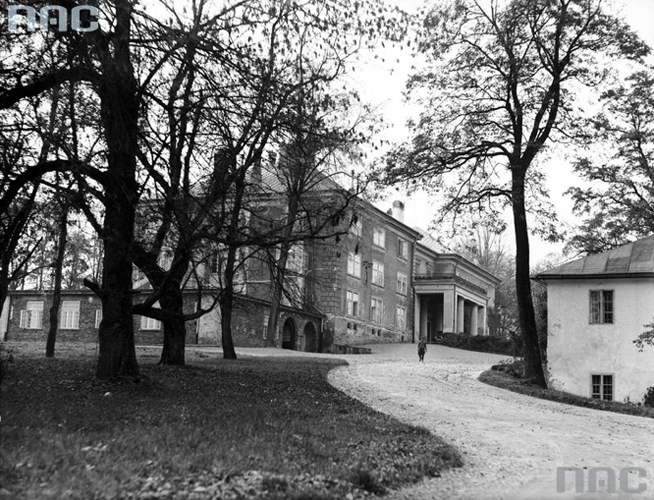
their author had skill in describing his adventures vividly, in an interesting manner, with a zest for life and a great sense of humor. However the “book” version has as much in common with its epistolary counterpart, as a Hollywood movie with true events on which the script was based. Therefore the characters are more handsome and more noble, defeats less painful and adventures more colorful, with an obligatory happy end. While in reality that half year period was a true ordeal! Only someone with an exceptionally strong personality and great mental hardiness could not only endure such a thing, but return home victorious.
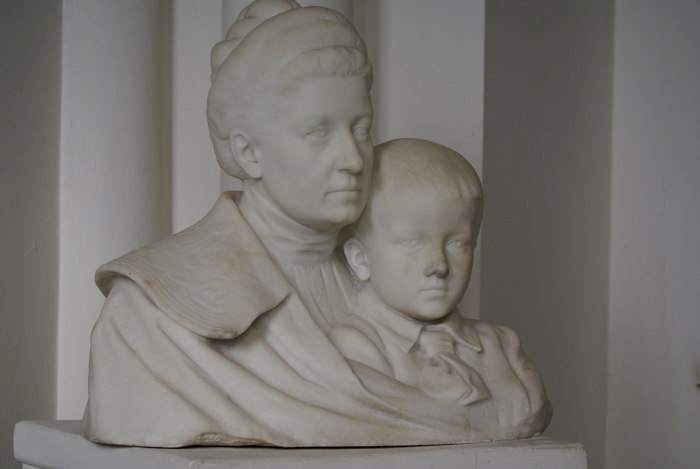
At the moment of undertaking the expedition, the 46-year-old Bogdan Ziętarski (1884–1958), an acclaimed expert on horse breeding and racing training, had been managing a racing stable and horse stud of the Sanguszko family in Gumniska near Tarnów for three years. Accompanying him on this journey was the 9 year younger, but already internationally recognized German expert on Arabian horses, Carl Raswan (1893–1966, real name: Carl Reinhard Schmidt), who at that time was already living in the US. The purpose of this escapade was to restore breeding its splendor, greatly deteriorated due to the cataclysms of World War I and the Bolshevik Revolution. The journey was funded (although with a certain reluctance, as we find out) by Prince Roman Władysław Sanguszko, at that time 29 years old (1901–1984), in whom ambitions to continue the family tradition of Arabian horse breeding had been awaken – to a large extent under the influence of Ziętarski. It should be remembered that the Sanguszko’s stud in Sławuta, established about 1506 in Volhynia, was, as Professor Witold Pruski wrote in his book „Dwa wieki polskiej hodowli koni arabskich (1778–1978) i jej sukcesy na świecie” [“Two centuries of Polish Arabian horse breeding (1778–1978) and its successes abroad”] (1983), “chronologically the second and undoubtedly the first in terms of quality stud in the Republic of Poland”. However on the November 1st, 1917 it was completely destroyed. The 85-year-old Prince Roman Damian Sanguszko, an uncle of Roman from Gumniska, was killed by the Bolsheviks. All that remained after the war in Gumniska, which took their roots from Sławuta and kept their own stud book from 1836, were 8 broodmares and 3 stallions. Beginning from 1927 Ziętarski carried out many imports from France, Yugoslavia and Hungary, but the expedition to Arabia was to be the crowning event of all the previous efforts. It should be noted that this was not the first time that the Sanguszko family imported desert horses: during 1804–1917, according to Professor Pruski, 73 stallions and 9 mares were imported to Sławuta from the East. So although Ziętarski’s expedition was but another, it was also the last of the “romantic” and adventurous journeys East to purchase horses, undertaken by Europeans in the 19th and 20th century. Soon both worlds of the Sanguszkos, as well as of the nomadic Bedouin tribes breeding pure blood horses would cease to exist.
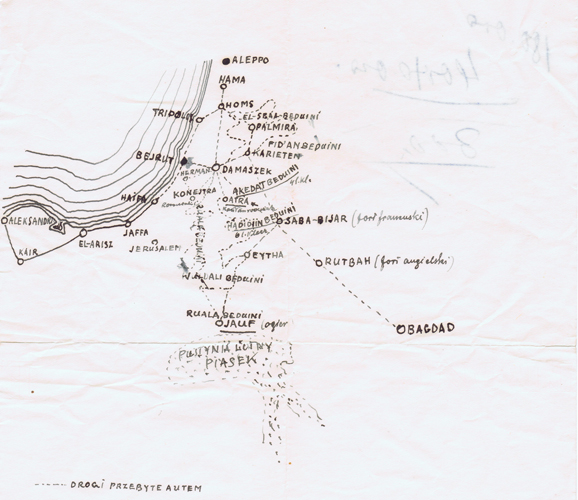
The expedition led through Constantinople-Alexandria-Cairo-Beirut-Damascus-Baghdad-Bahrain-Nejd. The return route was planned via Baghdad-Damascus-Beirut-Istanbul and from there by sea to Constanta. The men scheduled a meet on November 16th, 1930 in Budapest. They set off from Hungary to Constantinople on the 20th of November, after visiting together the stud in Babolna. At one time in his report Ziętarski gives an exact number of horses inspected during the journey (for example about 1,250 in Egypt, 43 in Bahrain) and at other times writes about “several”, “dozens” or “hundreds”. Rough estimates show that the total number must’ve neared about two thousand. The travelers journeyed over 12,000 km, during which they struggled with malaria, hunger, car failure, surprises courtesy of the weather and countless other adversities. “I bid farewell to the East from aboard [a ship]”, wrote Ziętarski, ending his memoirs and referring to the “Abazia” ship of the Lloyd Triestino company, setting sail on April 30th, 1931 from Istanbul to Constanta. “With a strong resolution never to return to these parts again.” Ziętarski arrived in Gumniska on May 12th and already the next day set off with two stallions to the race track in Lvov!
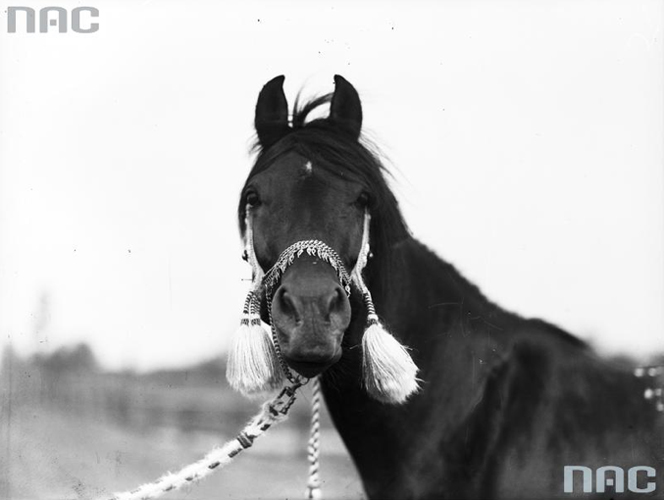
The time spent in the East left its toll on Ziętarski, but the expedition ended in overall success. Among other horses which Ziętarski was bringing to Gumniska was a stallion which turned out to be epoch-making – Kuhailan Haifi d.b. 1923, found among the Ruala Bedouins. He started a sireline whose each subsequent generation was better than the previous one. Kuhailan Haifi is considered the best desert bred Arabian ever imported to Poland! His son Ofir (in turn regarded as Kuhailan Haifi’s best get) gave the so-called “great four”: Wielki Szlem, Witraż, Witeź II and Wyrwidąb. Whereas Wielki Szlem gave Czort, the sire of El Paso. Witraż became famous as the sire of Celebes and Bask. The second import, Kuhailan Afas d.b. 1930, made a name for himself as the forefather of Comet 1953.
On how Kuhailan Haifi was exchanged for armored vests
And it is exactly the circumstance in which Kuhailan Haifi was purchased that is described differently in „Under the tents of the Bedouins” than in the letter sent to Prince Sanguszko in March from Damascus. In his memoirs Ziętarski describes the reception thrown in honor of both him and Raswan by the hospitable Ruala Bedouins in the following way: “The sheikh scoops out the brain from the skull of a lamb with his fingers, mashes it with rice and serves it directly to my mouth for me to eat.” When the conversation finally touches the topic of stallions: “The sheikh
![Kuhailan Haifi's pedigree. Jeździec i Hodowca magazine [Rider and Breeder], Under the tents of the Bedouins, 1931](https://polskiearaby.com/wp-content/uploads/2020/10/kuhailan_haifi_rodowod.jpg)
humbly states that he has never heard to have good horses. That indeed there is a stallion, but small and meager and that he will show him to us with shame, but he is sure that the horse cannot appeal to such “great lords” (huraga) from Europe who know the entire world.” When this “meager” stallion was finally brought before them, Ziętarski and Raswan realize that they have found exactly what they wanted: “I felt weak in the knees, it was a horse that I was looking for. (…) For the first time in my life when buying horses I felt close to fainting (…) The stallion was purchased late in the night and his delivery discussed. We slept through the night and at dawn, after paying the price, left.” What was the price, Ziętarski did not specify.
![Kuhailan Haifi's pedigree translated into Polish and published in the Jeździec i Hodowca magazine [Rider and Breeder], Under the tents of the Bedouins, 1931](https://polskiearaby.com/wp-content/uploads/2020/10/rodowod-tlumaczenie.jpg)
Meanwhile in his letter to the prince dated March 23rd we read not about „paying the price” and a calm departure at dawn, but about a sneaking escape! The mentioned below Fuaz was a grandson and at the same time titular successor of the ruler of Syria, the then 96-year-old Emir of Damascus Nuri Schalan (Amir Nuri as-Shaalan) – Faouaz Schalan (or Fawaz as-Schaalan, according to a different spelling). As Ziętarski wrote in his memoirs, he was “a greatly Europeanized, twenty something old young man” – and a “blood brother” to Raswan, whom he befriended during the German’s previous expeditions to the desert. The corporal, mentioned in this letter, is Corporal Hammad of the Akedat tribe from a camel cavalry division, appointed to the travelers by the French High Commissioner, a Frenchman named De Ponsot, as a guide and translator. And so here is a completely different, unknown up to now version of how Kuhailan Haifi was purchased:
Having received permission, I set off with the corporal and Raswan to the desert. I found nothing among the Sâaba, Fid’An or Wuold’ali Bedouins, while among the Ruala who come under the authority of Emir Fuaz (whom I offered the vests), 800 km from Damascus I found a bay Kuhailan stallion, with a small, handsome head, good tail carriage, long, deep-chested, with legs and hooves in a terrible state like they all have. However I saw such good young mares by him, that I decided to obtain the horse by all means. The stallion belonged to 40 owners and was used as a breeding sire. They said that he is absolutely not for sale. So I told Fuaz that I have his word, that in exchange for the armored vests I could choose any horses I wish. I am modest, I don’t want horses, but just that one horse. Fuaz made a face as though he just ate a raw frog, but said: I gave my word, you will get that horse. Then they started babbling among each other, how many camels and sheep Fuaz gave for the stallion, I don’t know. However in the evening
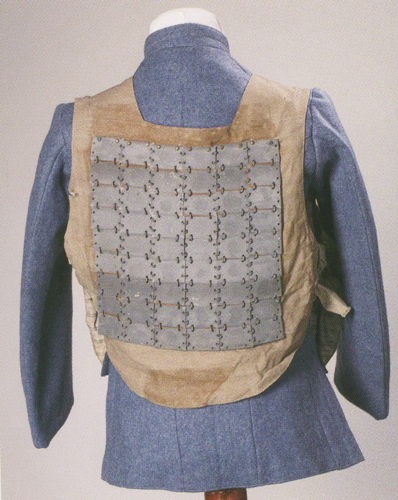
Fuaz’s slave told us that it’d be best if we escaped from the camp early morning at sunrise and headed straight for Damascus. That’s exactly what we did, covering 400 km that first day, which considering a drive across the steppe without roads was a pretty good result. We spent the first night among Bedouins from an unfamiliar tribe, the second in a small French fort, while on the third night we were arrived in Damascus. Until today I do not know whether it was a comedy arranged in my honor, or the truth. Either way Raswan rattled his teeth the entire way and damned me to the tenth generation; I finally threatened that I would throw him out of the car and he calmed down.
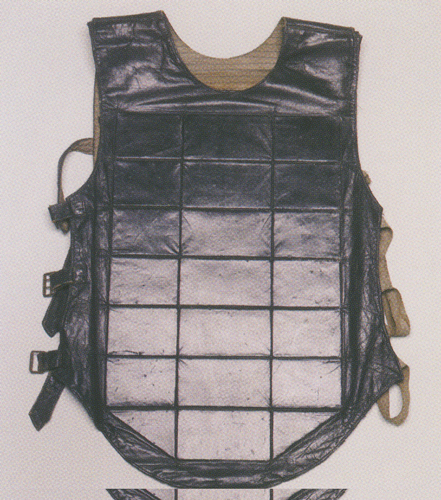
So it turns out that the horse was exchanged for armored vests! How on earth did Ziętarski and Raswan acquire military equipment? And what exactly could the term “armored vests” mean in 1931? “Everything!”, says Wojciech Potrzebnicki, a historian from the Museum of the Polish Army, who looks after a group of collections, including protective weaponry. “There were many models, made from various materials. They were cheaply obtainable from military surplus. During World War I assault troops used many prototypes of clothing which protected soldiers from shrapnels and bullets. The body was protected by smaller or larger steel plates or small plates attached to a leather undercoat, so it was a type of armor.” The Polish army did not use that kind of equipment at the time, however a bullet-proof plate armor was officially introduced for the State Police in 1930. Its prototype was made public in 1929. Two hundred of these were produced, but the number of prototypes is not known. It is very probable that it was those vests that Ziętarski brought with him – although their military origin cannot be ruled out. “Armors, which were produced in small batches, did not catch on in Europe. They were not valued, because they did not prove useful in European combat conditions. After the war people began getting rid of them”, explains Potrzebnicki. “One could purchase them from the Turks, as well as the French, Germans or Italians. Whether the travelers purchased them not before
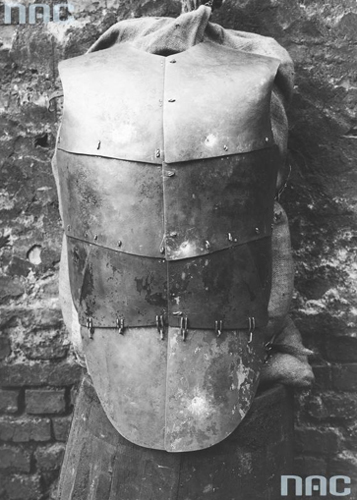
arriving in the Middle East or earlier in Europe, had no greater significance. If what we’re dealing with were simple protective covers from a reinforced material, then they did not take up as much space as those out of metal. Tens of them could’ve been packed into one trunk.” The vests, as the historian tells us, fitted into the Eastern military traditions, because they were a more modern version of chain mail or plated mail, which were in common use in the Middle East as late as the 20th century. “For tribes who were at constant war they were attractive goods”, he adds, “and they could have problems with obtaining them in another way.”

While in Damascus Ziętarski spent sleepless nights, feeling anxious about whether the Ruala would deliver the promised stallion. Although among Bedouins hospitality was sacred and it was known that “an offended host can seek revenge on a guest no sooner than after three days and three hours after the guest’s departure”, the travelers, leaving the camp at dawn, showed their hosts little trust. And the feeling did not grow after arriving in Damascus. When writing on the 23rd of March to the prince, Ziętarski had no news on Kuhailan Haifi:
I have estimated that a walking stallion, accompanied by armed riders on camels and milk camels, in order to give him drink on the journey, is not able to cover more than 25 km per day, if he is to get here alive. So he will not get to Damascus by the 5th, not to mention Beirut. Therefore I must wait for him and for the mares, who are also not here yet.
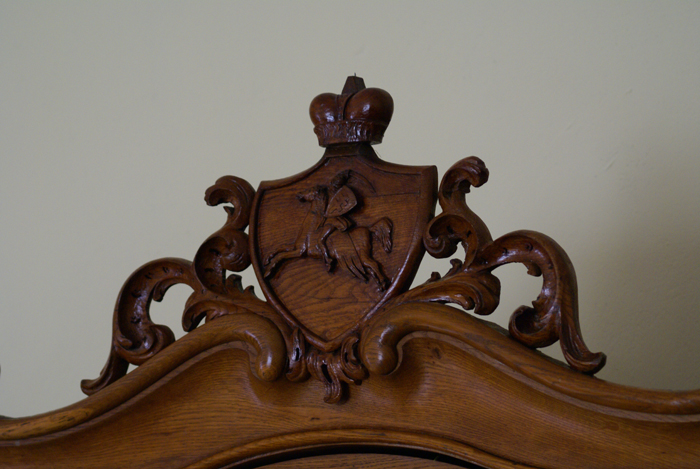
On April 1st he reported to the prince, already making breeding plans (the below mentioned Fantazja 1922 out of Muszka/Omar Pasza III is the daughter of the Sławuta-bred stallion Linkoln 1911 – however in the end she was not bred to Kuhailan Haifi), the following news:
Today my concerns have slightly diminished. The bay stallion has come from the desert. For a week I could not sleep out of fear that I would not get the horse. The French have sent out a punitive expedition and are disarming the Bedouins. There is no way to get to the desert. I was afraid that in the face of these circumstances they might not be able to deliver the horse, but I have already given the vests and how could I return to Gumniska without the stallion. Your Higness will laugh, but I would never in my life want to go through a second week of this sort again. (…) The stallion has both knees bruised, but those will heal. He is greatly fatigued, but looks cheerful. Now I’m only worried whether he will appeal to Your Highness. He has a large head, but very refined, carries his tail in a wonderful manner, which today is hard to find in the desert. I would most definitely like to breed him to Fantazja already this very year.
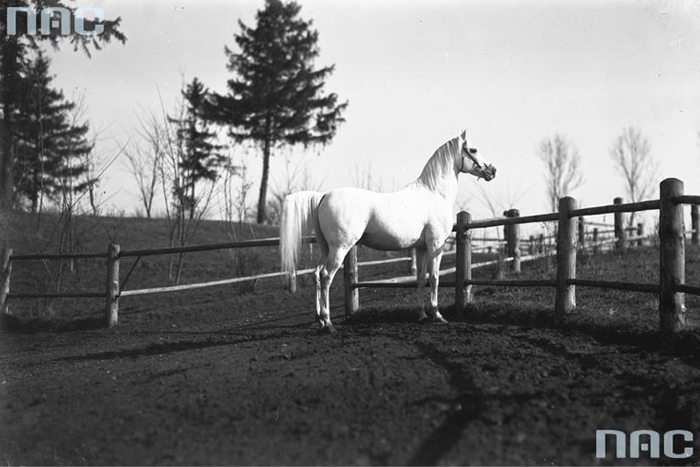
The letter from March shows Ziętarski’s literary temperament in the style of Henryk Sienkiewicz himself [a Polish journalist and Noble-prize winning author, best known for his patriotic epic novels]. Why didn’t he mention the escape from the Ruala camp in his further account? It is not hard to guess that he wanted to remain silent about a deed that could be qualified as arms trade, though at the time the regulations were not as strict as they are today and the transport of armored vests across half the world (if they were purchased in Europe) did not have to pose a great problem. “If someone with such connections as Prince Sanguszko wanted to transport even a cannon via that route”, laughs Wojciech Potrzebnicki, “I suspect that he would’ve have also manage to do that.” However delivering military equipment to the desert could’ve been acknowledged as favoring one side of the conflict, which is something that the prince’s emissaries surely wanted to avoid. The nomadic tribes were at war with King Ibn Saud, who, as Ziętarski explained, “crushed the Bedouins completely and destroyed their breeding, taking their horses which he incorporated into his cavalry, while some were given out to sedentary Arabs, his relatives and followers.” Indeed, Abd al-Aziz ibn Saud (1880–1953), a tribal chief and religious leader of the Wahhabis, from 1902 the ruler of Riyadh, conquered independent princedoms of the Arabian Peninsula and in 1932 announced a new kingdom – Saudi Arabia. The nomadic tribes also revolted against wealthy colonial superpowers which at that time administered in that region (something which Ziętarski mentions in his letter of April 1st – The French have sent out a punitive expedition and are disarming the Bedouins) – France in Syria and Lebanon, Great Britain in Iraq, Palestine and the Emirate of Transjordan (the so-called League of Nations mandate territories). So it was rather obvious that the travelers, making use of French hospitality, did not want to admit to rearming the Bedouins, although they would most probably explain the content of the trunks (assuming that that’s how the vests were packed) in case of an inspection as plain gifts for the hosts (illustrations show how these vests could’ve looked like).
Money, or rather the lack thereof
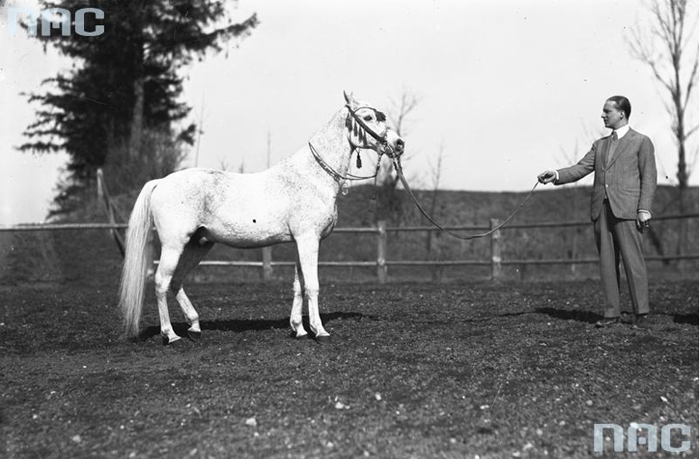
In „Under the tents of the Bedouins” Ziętarski also gives no mention about his financial problems, with which he struggled during the expedition. He probably did not want to present his employer, Prince Sanguszko, in a bad light, as one who grudges his fully devoted emissaries resources. He also did not want to present himself in that bad light, as the expedition’s leader who poorly planned his expenses and excessively prolonged his stay in the East. Either way, we will not find anything about money in the book, whereas the letters really included that one and only issue and the described adventures seem to just deftly “camouflage” the financial problem. On March 23rd Ziętarski complained:
The greatest problem is with the funds, for I have not foreseen all these obstacles and was not prepared to receive only the stallion in exchange for the vests and that I would have to buy the rest. I also did not assume that I would have to sit in Damascus with the horses and two people until April and also a transport to Beirut, and I have only 100 pounds in funds. First of all I must pay Raswan his allowance for 15 days, I have to live myself and also pay for the horses’ keep and finally pay for transport and our tickets to Constanta. The worst is that Cook still has not sent me an estimation of how much the transport will cost. (…) It is not pleasant for me to once again knock on Your Highness’ pocket, but I must ask to be bought out from Syrian captivity and to be sent $2000. (…) I very much apologize to Your Highness that I once again ask for money, but I really think that it is more a matter of coincidence than my imprecision and error. I have prepared an entire breeding plan for a long time period and want to gather the entire material necessary for that. Even if I would have bought one or two horses less it would not have changed the situation. I also have some problems with the local customs office due to the prolonging of the horses’ stay in Damascus, but I hope to get out of that with a small bribe.
On April 1st he called dramatically to the prince, even giving him detailed instructions:
Please forgive me for writing so incoherently, but all these oriental troubles have thrown me off balance. If Your Highness would be kind enough to transfer the money through the bank of Rotschild in Vienna, that would be best. Rotschild should withdraw the money and pay them in Cook’s office in Vienna with instructions that they telegraph Cook in Beirut, to have him pay me the money there.
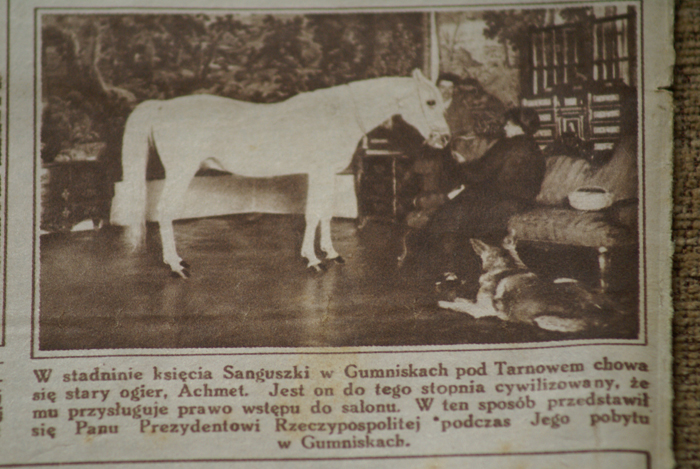
Ziętarski’s eight page long letter from March (with an additional map) also contains interesting details on other horses purchased by him. It turns out that the mare Sheikha d.b. 1923 was bred to a desert stallion prior to the journey. Unfortunately she arrived in Gumniska barren. Ziętarski wrote a lot about the “known today in all of lower Arabia” mare in “Under the tents of the Bedouins”. “This mare was the property of the chief sheikh of the Muthea Bedouins, Damisch-Hadji-Bega. Damisch, fighting against Ibn Saud, led a large force of 800 people on camels and 300 on mares (…) After a fierce defense Damisch’s entire detachment was routed.” Damisch’s secretary, who rode Sheikha, was able to flee, leaving behind the pursuit, and made for the nearest well, located 80 km away. However that particular one was seized by Ibn Saud’s patrol. So he turned around, in gallop, back to the desert and fled for another 100 km, all the way to Kuwait. Sheikha covered this entire route without food, drink or rest. “I decided to find this mare and buy her”, wrote Ziętarski. “After a two week search and a reconnaissance carried out with a truly Eastern cunningness, we found out with great certainty that the mare was inherited from the killed Damisch by a sheikh from the Montefik tribe as his closest relative.” It wasn’t easy to convince the sheikh that they are not spies of Ibn Saud. However in the end the sheikh, who at first denied that he knew anything about the mare, agreed to sell her. She was hidden “in a place where I would expect everything but a horse”. Ziętarski describes the amount of patience required when dealing with Arabs with a typical of him sense of humor, quoting an Arabian proverb: „Es – Sábár min – er Rahman / El – Ajal min – esch – Sheitan”, which means: “Patience is granted by God, while haste comes from Satan”. “If that’s true”, concluded Ziętarski, “then Satan has long ago died out of rage.”
Here is a letter fragment concerning Sheikha:
When writing about horses from Baghdad I forgot to mention that Szejcha was in heat and I bred her to a very beautiful stallion, Kohajlan Abu Dżinoud, from the French department. If she conceives, then she will next year give birth to a foal who will also have the right to be registered in the stud book as an import (imported in the dam’s womb).
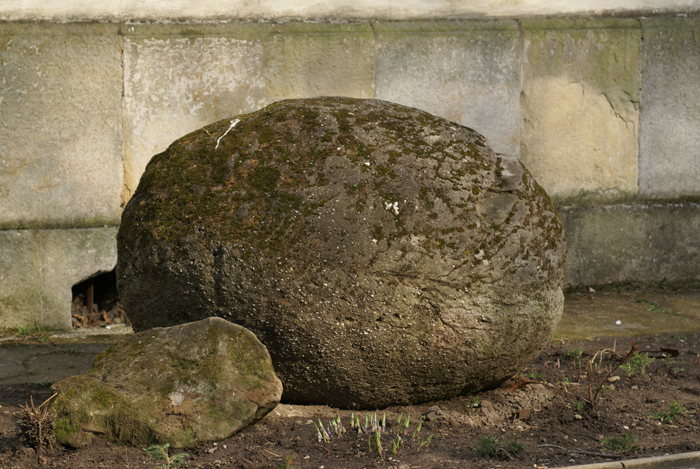
Whereas the yearling Kuhailan Ajouz d.b. 1930, found among the Would’ali Bedouins, who later gave the stallion Wezyr 1936 (sold to Babolna), was according to Ziętarski a candidate to replace the merited and prince’s favorite mount, Achmet. Achmet was on such friendly terms with the Sanguszko family that after having his hooves oiled he was led inside the palace halls, across the parquet floors. Today he and six dogs lay under a large boulder near the former Sanguszko palace. And so Achmet has his tombstone and the local tradition claims that sitting on that rock supposedly brings luck. Ziętarski wrote:
I did not find yearlings in the desert, because they moved them out to pastures to farms near Damascus, due to the terrible drought of this year. Having returned from this trip I drove to the places where the foals were located the very next day. The distance from Damascus ranged from 40 to 150 km. What I did was I first noted down the foals and then returned to get the best. I bought a yearling, a gold chestnut Kohajlan Ajouz with an admixture of Saklawi and Hamdani. He seems to me the most beautiful out of the entire crop and I hope that he will someday replace Achmet and will be walk across the sitting room. He has a small star and a white coronet. His price is 22 gold pounds payable in Damascus.

Ziętarski ended his letter by showing the prince that although he is far away and engaged in exotic journeys, he did not forget about the horses which remained in Gumniska: Thank God all is in good health and the foal by Era and Nedjari very beautiful (supposedly). However Era 1921 by Mahomet, a silver medalist and first place holder from the National Exhibition in Poznań in 1929, as Roman Pankiewicz makes known in „Polska hodowla koni czystej krwi arabskiej 1918–1939” [“Polish Arabian horse breeding 1918–1939”], “did not earn merit in breeding and in 1933 was transferred to half-breeding”. So it seems that her foal by the French Nedjari 1926 (by Nibeh d.b.), imported to Gumniska by Ziętarski in 1929, did not live up to expectations, though several years earlier, in a letter from Paris, Ziętarski wrote to the prince that the purchase of Nediari to Gumniska will be epoch-making.
On what Carl Raswan wrote to the prince
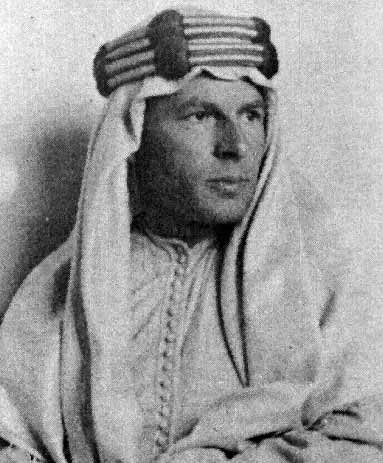
Carl Raswan wrote to the prince in English and… he also wrote mainly about money. The German asked for additional funds to purchase a superb, according to him, mare:
From the beginning I said, that I do not expect to find a stallion or mare in Egypt (or Syria) which might “suit” Mr. Z. (& consequently you too). However, we “discovered” an unusual mare. – She seems to be the “sister” to Nedjari. A mare of the very same type & breeding. – From among several hundred (perhaps 600) horses which we have seen this one mare is outstanding. She is the type which, when brought to Poland, people will point to her & say: “What an Arab!” and neither Mr. Z. nor I would be ashamed to buy her or show her to anybody in Europe. She is 3 years, a chestnut, has been on the racetrack and won. She is exactly what we want: type, breeding, head, legs, tail carriage, broodmare & race mare “rolled” into one. – She has only one fault: she costs eight hundred & eighty pounds, including the commission of the owner’s manager. I would have bought her (the manager asked twelve hundreds pounds in the beginning, but we are at a “deadlock” with him at eight hundred eighty) – however Mr. Zietarski does not want to pay so much now, we had some friendly arguments about it & decided that the best thing is that we wait until we get to Baghdad, after crossing Arabia & before going to Europe we shall pick her up here & bring her along. None of us thought of finding such a mare here in Egypt & we never thought of spending that much money on a horse. However it seems to be a similar case as with “Nedjari”. – We found a Diamond right at the beginning of the journey & we need now only to find the 6 yearlings & a stallion to make Mr. Z. perfectly happy. He said already, that he calls his trip so far successful enough, that he would not be ashamed to return with this mare only, as everybody in Poland would envy him (& in consequence Your Highness) for such a mare. – Of course, I do not “handle” your money & cannot buy her, but Mr. Zietarski is double careful, he will write to you about it & ask you for enough money to be send to Baghdad. – I hope you do it, as I want you to own this mare – a picture of breeding & blood.
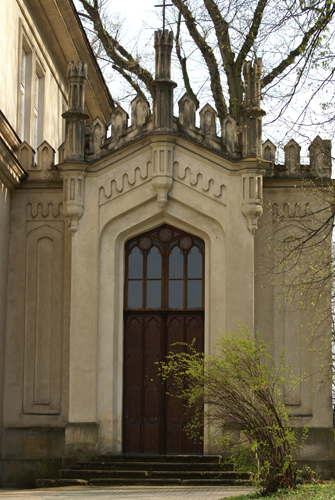
Well, the mare, which name we don’t even know, ultimately did not find her way to Gumniska. Bogdan Ziętarski did not mention even a word about her. Granted, he hinted in “Under the tents of the Bedouins” about a 2 year old grey filly who caught his attention in Cairo, but was not for sale. However the one from Raswan’s letter is a 3 year old chestnut. Most probably the prince did not send the required sum. As we read in the letters, the “boss” often left his emissaries to themselves… An absolute lack of mention about such a splendid, as it would appear from Raswan’s enthusiastic description, horse might mean that the would-be transaction was associated with an unpleasant defeat for Ziętarski.
Both gentlemen tightened their friendship during the journey. Raswan expressed this in a letter to the prince. There is no reason to assume that the praise was insincere, though we should remember that it was Ziętarski who was the head of the expedition and who paid Raswan his allowance.
Your Highness – I wish to thank you for your confidence to send me along to Arabia with Mr. Bogdan Ziętarski, who proved to be a very congenial companion. Every day more I am convinced that he is one of the best horsemen alive. It would be too much to write all the details, as I had such interesting experience with Mr. Z. at various stables & racecourses. I hope however that I shell have the pleasure to relate our experiences some day in Gumniska, after our great journey is over.
![The former riding arena in Gumniska. Today is a a PKS [Car Communication Enterprise] center. By Krzysztof Dużyński](https://polskiearaby.com/wp-content/uploads/2020/10/manez.jpg)
According to Raswan he was not the only one greatly impressed by Ziętarski’s competence. Also Mr. Branch, the chief of the Veterinary Department of the Egyptian Agricultural Ministry and at the same time director of the Societé d’Agriculture stallion depots and the manager of the stud owned by princes Mohamed Ali and Kemmal-El-Din, shared his opinion:
Dr. Branch was surprise to meet a real horseman in Mr. Zietarski & was so enthusiastic about it that he kept Mr. Z. until 8 pm. at the Royal Agricultural Society’s stables & studfarm, asking questions & showing over & over again his horses. Mr. Zietarski was not only able to judge the horses but also tell from the looks of the colts and fillies from which parents they came.
Raswan, as results from the letter, also took care of the prince’s business in America. We find out how much the following horses were to cost: the descending from the Sławuta damline of Sapieha ca. 1810 – stallion Vali 1927 (Gazal 1 – Valide/Siglavi-Bagdady II) and born in Gumniska, the fantastic race horse Ibrahim 1925 (Narzan – Lida/Sułtan d.b.), a grandson of stallions once imported from the East, who in the summer season of 1928 won the largest sum among all Arabian horses competing at the track in Piotrków – 2600 zlotys:
I arranged with Mr. Z. about “Ibrahim” & “Vali”. Ibrahim for $ 12 000 & “Vali” for $ 3000. Out of this 10% for me (of which I pay for insurance & shipping). I have asked my friends in America to send the purchase price to the American Consulate in Budapest. I could pay there to Mr. Z. & take “Ibrahim” over. Anyhow, I had six letters on my ads in America and I believe you will see “Ibrahim” in U.S.A. before next summer. – “Vali” will be sold for more than $ 3000 as you must receive in full $ 3000 for him. He will not leave Poland before fall 1931.
However in the end none of these horses was exported to the US.
We know from Ziętarski’s letter dated April 1st that Raswan was calm about a possible selling of Kuhailan Haifi to America, should the horse not appeal to the prince: Raswan says that if Your Highness would not like him, then he will buy him in the Autumn for $8000 to America.
Who awaited Ziętarski after his return to Gumniska
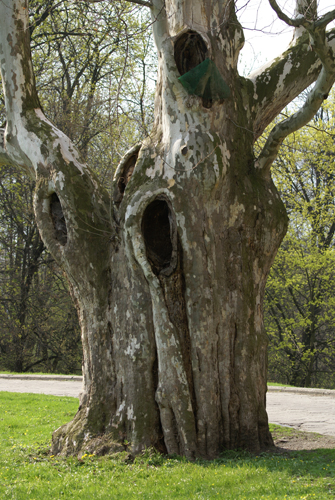
A half-year long expedition, despite the constant piling up of problems and disappointed hopes, as in the case of the mentioned Egyptian mare, undoubtedly brought wonderful results. Apart from the most valuable in this group bay Kuhailan Haifi, chestnuts Kuhailan Ajouz and Sheikha, Ziętarski and Raswan brought to Gumniska the stallions Kuhailan Kruszan d.b. 1927 (chestnut), Kuhailan Afas d.b. 1930 (bay) and three chestnut mares: Hadba Inzihi d.b. 1930, Rabda Khuszaiba d.b. 1927 and Hamdani Semrie d.b. 1930; and additionally to Babolna the bay stallion Kuhailan Zaid d.b. (1923 or 1925). On April 1st Ziętarski wrote: Never in my life would I want to go through something similar to this for a second time. The one thing that lifts me up is that now Gumniska will have the best herd in the world.
Thanks to the next letter, sent from Gumniska the day after his return, May 13th, 1931, we know that Ziętarski received neither the eagerly awaited funds, nor the escorts which he also asked for. He had to get a loan to pay for the remaining horses and return journey. And by no means did his financial problems end.
Money from Your Highness did not come to Beirut, nor did the escorts. (…) The Hungarians lent me $1000 and that saved me partially. (…) I kindly ask to sent me $2600 to Lvov, as I must pay back the debts I have made. (…) I have arrived in Gumniska without money. Your plenipotentiary refused to pay me my back allowance and only gave me 1000 zlotys for the trip to Lvov. (…) I very much ask for dollars, because if I don’t pay back on time now, they will not help me a second time.

Ziętarski must’ve been dejected by the unending financial problems. His letters show a tone of desperation more than once, and hiding behind the polite words was undoubtedly a grudge against his principal, that he exposed him to additional stress, as though the super-difficult expedition did not deliver enough of that. He probably also wanted Prince Sanguszko to show more interest in the results of this extraordinary expedition. Whereas the prince was not present in Gumniska when the horses from the desert finally arrived there. Even the mentioned plenipotentiary did not want to spare Ziętarski his time. I did not receive a private audience, complained the breeder, clearly greatly annoyed, in the quoted letter. So it appears that no one in Gumniska awaited his return with eagerness. Contrary to the local breeders: I await Your Highness’ verdict regarding the imports with great anxiety. They have been seen by Raciborski, who left here almost senseless, informed Ziętarski. This rapture bore fruit, because as Professor Pruski wrote, breeder Teresa Raciborska obtained very good mares from breedings to Kuhailan Haifi: Donia 1933, Mufta Maleńka 1933, Seniora 1933, Sumaka 1934 and Tajga 1934. The prince’s somewhat indifference resulted from the fact that at that time he was greatly preoccupied by other matters. First of all, in Autumn of 1930 he met his great love, a many year mistress and later wife Wanda Krynicka. They met mainly in Vienna, so the prince often remained abroad. Second, he was more interested in motorization than horses. “Roman Sanguszko at first did not show a greater enthusiasm for horses, whereas had a great passion for cars, which he had many of and of various brands and was a superb driver”, admitted Professor Pruski, emphasizing however that the prince rendered great service for breeding with “apt decisions and rational financial outlays”. These outlays during the economical collapse, which (as a result of a world crisis) affected Poland in 1930, could not have been as high as they previously planned with Ziętarski. That is probably the reason behind the lack of funding for the expedition to the desert.
We must also add that Ziętarski brought with him, beside the horses, two full Arabian attires (he later posed for photographs in one of them) and a Persian dagger as a gift for the prince: I gave two full Arabian attires to Adam. And from myself I dare enclose for Your Highness a khanjar as a token gratefulness.
Ziętarski was aware that these were probably the last imports from the East. He was an intelligent man and understood that this world is becoming a thing of the past. This is how he summed up his journey in “Under the tents of the Bedouins”: „Today when I think about what I saw on the steppes of Arabia, I am strongly convinced that the horse of the Bedouins in terms of health, stamina and conformation (depth, short-leggedness and rib cage) is superior to all other breeds in the world. Unfortunately, I departed with an impression that this breeding is rapidly coming to an end (…) The Bedouins are settling and for a sedentary way of life a camel, sheep and donkey reflect a greater practical value than a pure bred horse. They breed a relatively small amount of mares and if about 80-90% of the born foals die in the first year, then it is easy to understand that soon a horse will be a greater rarity than a car on the steppes of Arabia.” However Ziętarski hoped that the best type of Arabian horse could be preserved thanks to imports, a proper breeding within “pure lines” and racing selection: “Perhaps in a short while breeders of Arabian horses will have to search not in the East, but in Poland for such horses that I have searched for this year.” An impressive far-sightedness!
Later lots of people, horses and documents
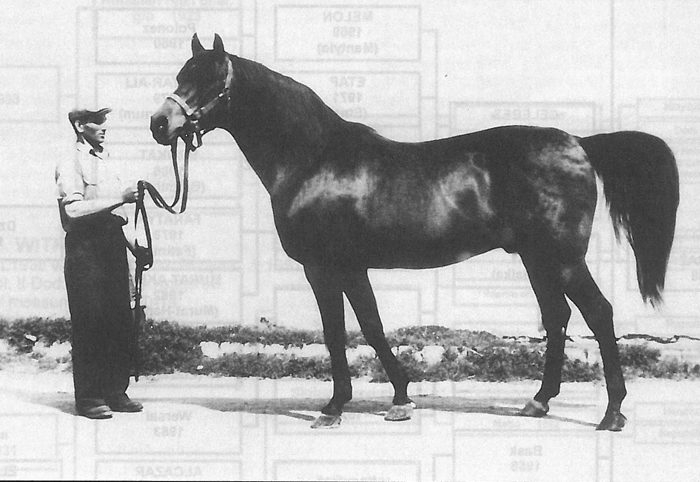
Meanwhile history – not for the first time – cruelly dealt with both people and horses. The enormous effort, both logistical and financial, often requiring heroic persistence and immeasurable patience, was squandered to a great extent, due to the cataclysm of the World War II. Roman Pankiewicz tracked down the lots of the imported horses:
Kuhailan Haifi died as early as 1934 (when he fell ill, a doctor from Vienna was brought, but even he was unable to save the horse), having been bred to just four mares. Three out of the four born (and sold) foals were exported. However the stallion was also available to mares from outside the stud. It was Janów Podlaski’s Dziwa by Abu Mlech who produced the epochal Ofir.
Kuhailan Kruszan, from whom 23 foals were obtained (he was bred to Sheikha, among others), was lost in 1939 and the majority of his get went missing in 1945.
Kuhailan Afas was bred to only one mare in Gumniska; the mare that was born from this cross, Birma 1939 was lost in 1945. His son Bad Afas, grandsire of Comet, was foaled in Zabawa. Whereas the desert stallion went missing in 1939.
The valiant Szeikha, similar to her numerous daughters, was lost in 1945. The only survivor was her granddaughter, the black Ferha 1943, the later dam of the stallion Faher.
Hadba Inzihi shared the lot of Sheikha.
Rabda Khuszaiba died in 1946. Prior to that she was bred twice to Kuhailan Kruszan. A result of these matings, the mare Arosa 1938, went missing in 1945 and the get of her full brother, the stallion Urkub 1935, was also lost.
The lots of Hamdani Semrie are unknown.
Whereas Kuhailan Zaid rendered great service in Babolna. His last get was born in 1946.
In 1945 came the end of the stud in Gumniska, which during the German occupation of Poland was still managed by Bogdan Ziętarski. The horses were lost during the evacuation near Nowy Tomyśl; they most probably were seized by Soviet soldiers. Part of the youngsters were left in Racot; as Roman Pankiewicz established, these horses later participated in races on the track, but were ultimately lost for breeding.
After the war Ziętarski himself worked as a manager of a foal barn of work horses in PGR [State Agricultural Farm] Milicz. The fact that his huge experience and knowledge were never taken advantage of in the new system was probably determined by his previous work for Prince Sanguszko. As Pankiewicz recalls, Ziętarski lived in extremely primitive conditions. He had a small room with a privy in the yard and had to bring water from the barn. His merits were forgotten. “History has a tendency to place some people on the pedestal and to bury others”, Pankiewicz sadly concludes. “He was buried, though he was an outstanding person.”
Roman Sanguszko in 1939 managed to get to France through Hungary. After a period of exile he settled in Sao Paulo in Brazil. He never visited Poland again. He died in 1984. His mother, duchess Konstancja, was forced to leave the palace and lived in a diocese complex at the Tarnów cathedral. She died in 1946. His grandson Paweł (born 1973), the last living male descendant of this line, was born and raised in Brazil and currently resides in France. His daughter Olimpia was born in 2010.
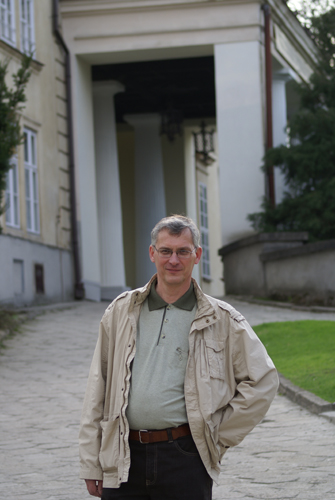
The estate and possessions of the Sanguszkos were nationalized. In 1947 the palace in Gumniska was transformed into a school (today it is the Economic and Horticulture School Complex in Tarnów) and probably for that reason it has been preserved. The school continues the tradition of the horticulture society founded by Eustachy Sanguszko in 1881. Also preserved is part of the stables together with the riding arena – but as a PKS [Car Communication Enterprise, a major Polish enterprise dealing with public transport] center. As the school’s director Jerzy Sokoła explains, the inside of the building remains almost untransformed – if all the doors would be opened, there would be no need to walk out into the hallway. Of course the rooms are used for different purposes than the Sanguszkos used them for – for example the former ballroom is now an auditorium and the hallway was once a dining room. In today’s reading room, once the prince’s study, a tiled stove has been preserved and in front of today’s chemistry lab – a fish pool for the needs of the palace kitchen. The director’s office is located in the former study of duchess Konstancja. It was through here that the family’s pupil, Achmet, entered the palace. In many places we can still admire Sanguszko doors, as well as beech and oak parquets, which – similarly to the original wooden stairs – turned out to be resistant to the tramping of feet of 550 students, moving from class to class every day. The building is extremely durable, admits director Sokoła. So far the roof has not undergone renovation and the renovation of the elevation carried out in the 80s consisted solely of rendering the walls with mortar made from white cement and yellow sand. The park has been greatly thinned, but one can still admire the more than 200 year old trees, including the most valuable nature monument of the Tarnów region, a branchy plane tree, growing in front of the palace entrance. “The strength of tradition definitely has an influence on our students”, says director Sokoła. “They take care of the historic surroundings in which they are fortunate to learn.”
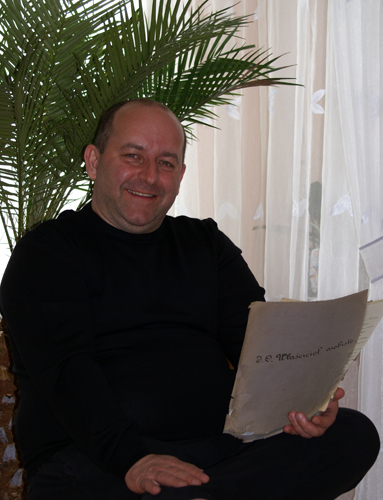
After the war the extensive Sanguszko library was dispersed. The quoted letters, as well as a number of other documents and correspondence (also from Ziętarski, including letters from Paris) from the private archives of Prince Sanguszko, are located today in the collection of Tarnów resident Marek Tomaszewski, who collects old postcards of Tarnów and other memorabilia associated with his home town. He often finds exhibits on the Allegro internet auction site. And it is there, as he told polskiearaby.pl, that 5 years ago someone listed a financial report regarding cash funds, deposits and stocks owned by the Sanguszkos. “I think it must have been a secret document, because who at that time boasted how much money he had and where it was located?” told us Tomaszewski. “Beside that there were also two other documents. I was able to win all of them.” The seller informed the collector that he has more documents of this sort. “I traveled to Cracow”, Tomaszewski says. “It turned out that the person was an army officer. He showed me a folder, I looked and saw old calligraphy, the Sanguszko name… I asked where he got it and he answered: at Grzegórzki, there is a flea market every week on Grzegórzecka Street in Cracow, next to the market hall. I asked how much he paid for it. He didn’t remember the exact amount, but said it was perhaps 30 Polish zlotys for the entire folder.” Tomaszewski paid much more. When he asked why so much, he heard: “Knowledge costs…”.
The earlier history of the folder is unknown. At the turn of 1944 and 1945 the plunder of Gumniska began. “The Germans had time to transport only several trucks of valuables from the palace” – we read in the Great Guide to Tarnów (vol. 17). “After their flight and before the Soviet detachments walked into the city, a sort of void was formed, which common thieves took advantage of.” In March of 1945 the voivode of Cracow appointed the Regional Museum of Tarnów, where the salvaged book collections of the Sanguszkos were to be stored. Due to a lack of transport, the books and archives were brought from Gumniska to Tarnów by hand-carts and horse carts. “They were gathered from heaps, onto which they were dumped from the time when the Soviet armies stationed in the palace. During the transport and earlier many books and documents were destroyed. The people, encouraged by such a treatment of goods which up to now were respected, took this or that as memorabilia, not regarding it as theft.” Probably in such
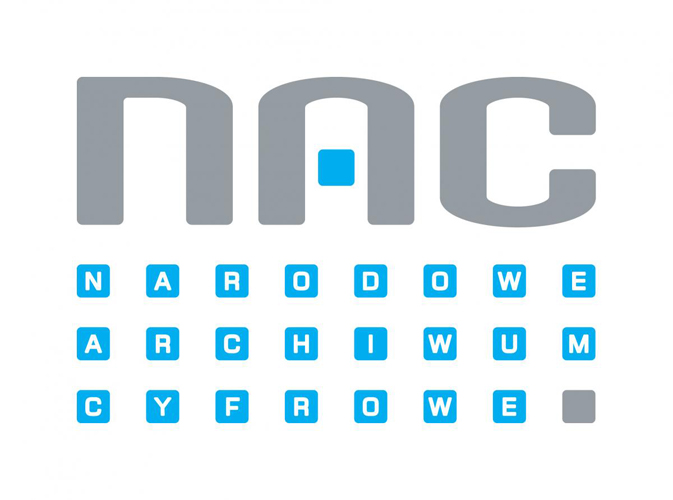
a way the folder with the prince’s private letters found itself to someone’s drawer, later to the flea market and later onto Allegro. Marek Tomaszewski looked into it when preparing a publication of an album with his collection. At first he could not decipher the signatures under the letters. Only the much more diligent calligraphy of Raswan’s letter allowed to read the name of Ziętarski. This in turn allowed to put the letters together into one complete whole. Today they serve as testimony to days from not so long ago, yet at the same time from a distant era and a memento of a remarkable man, who did not receive the treatment he deserved during his lifetime.
Download the PDF version of the article»


